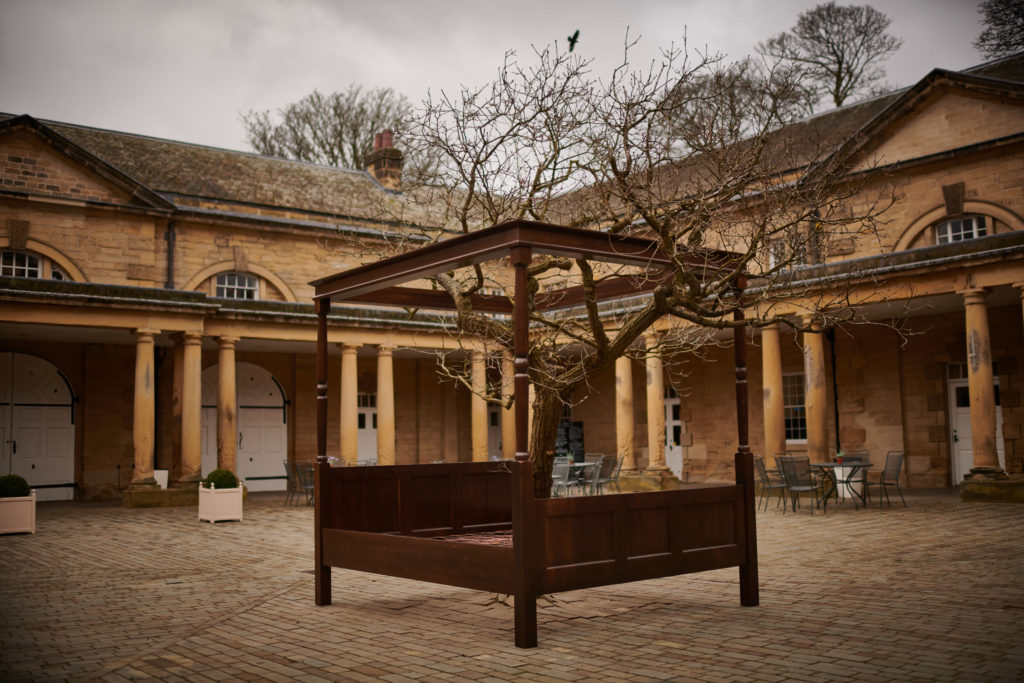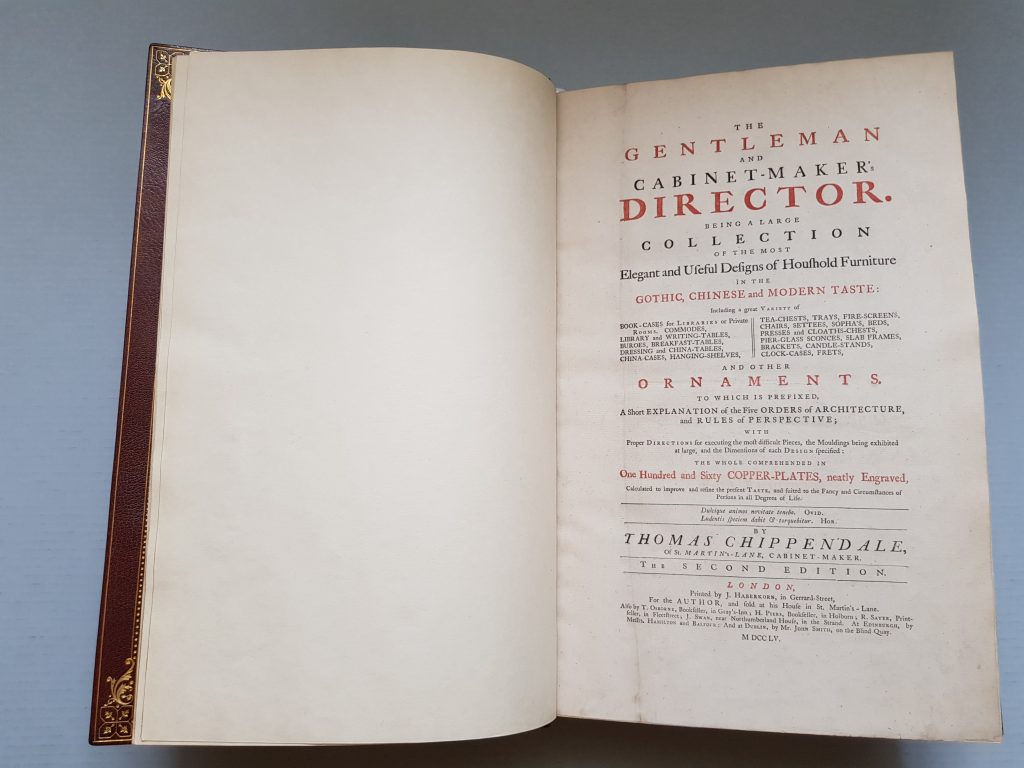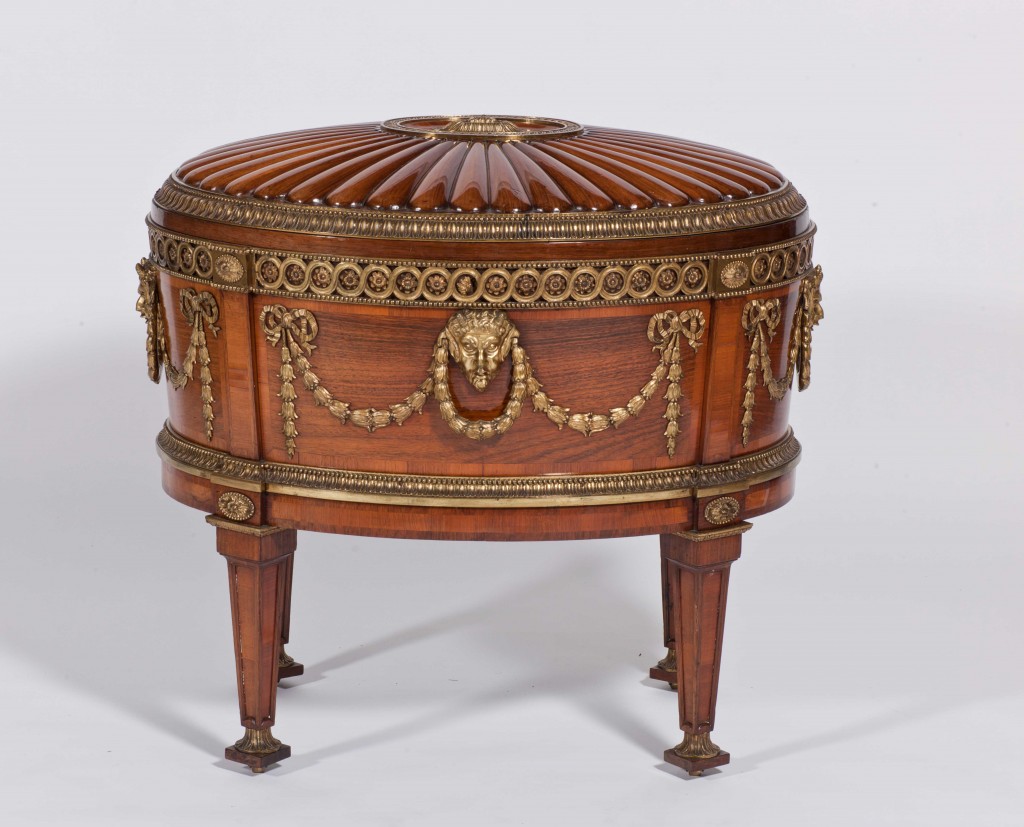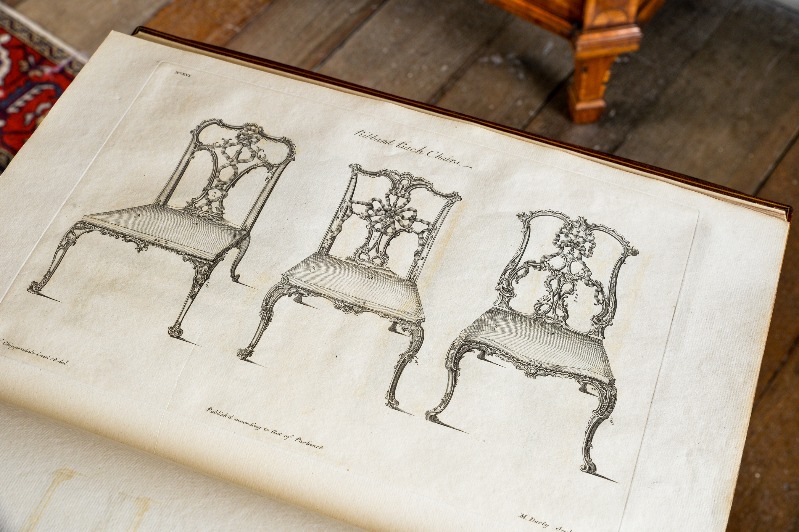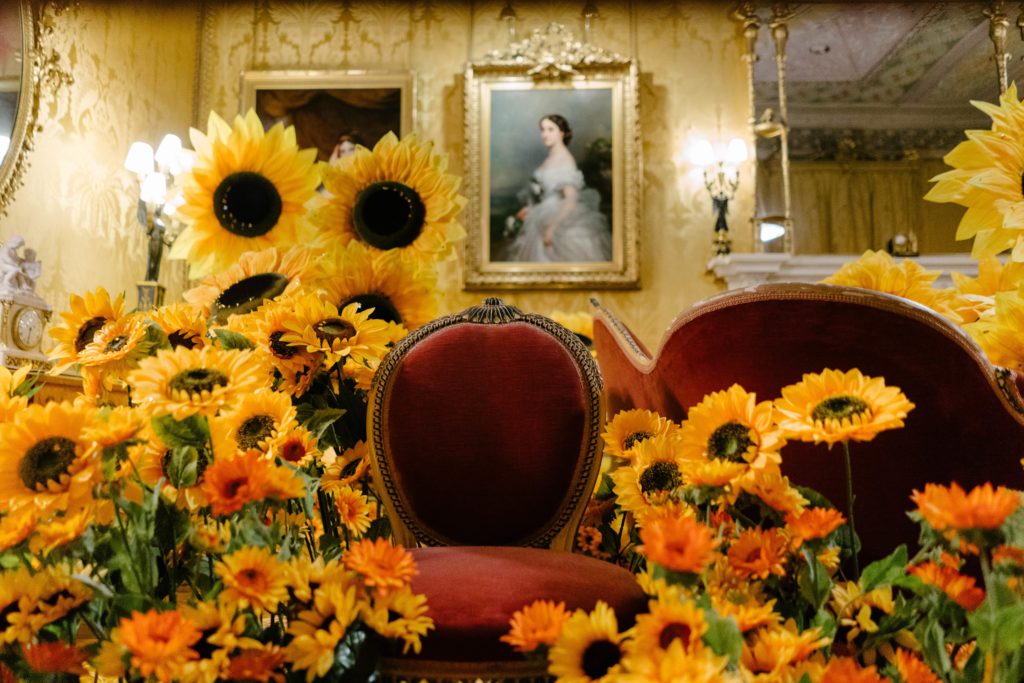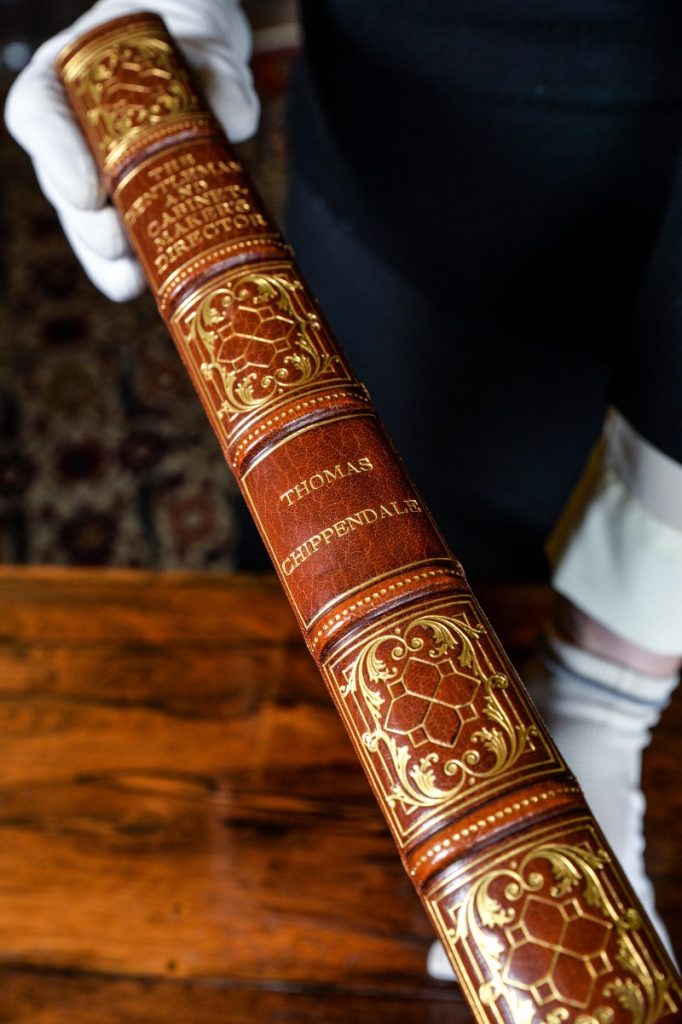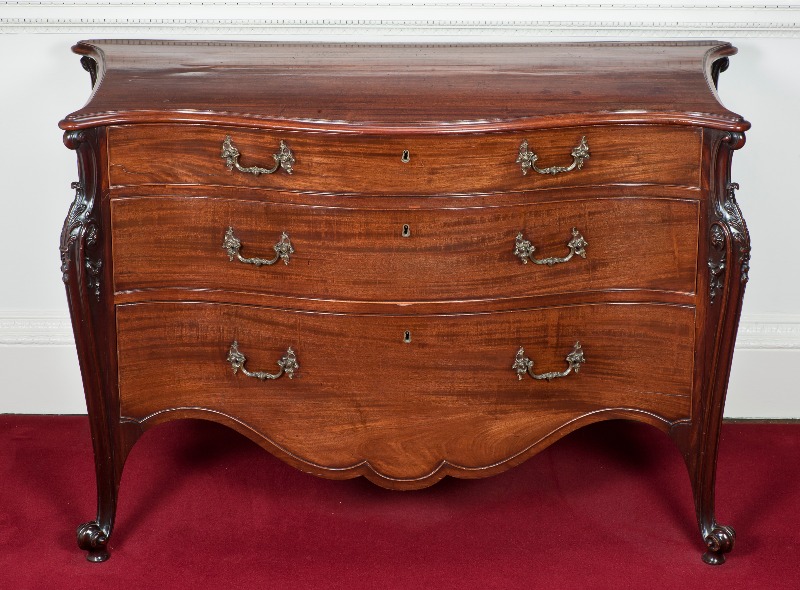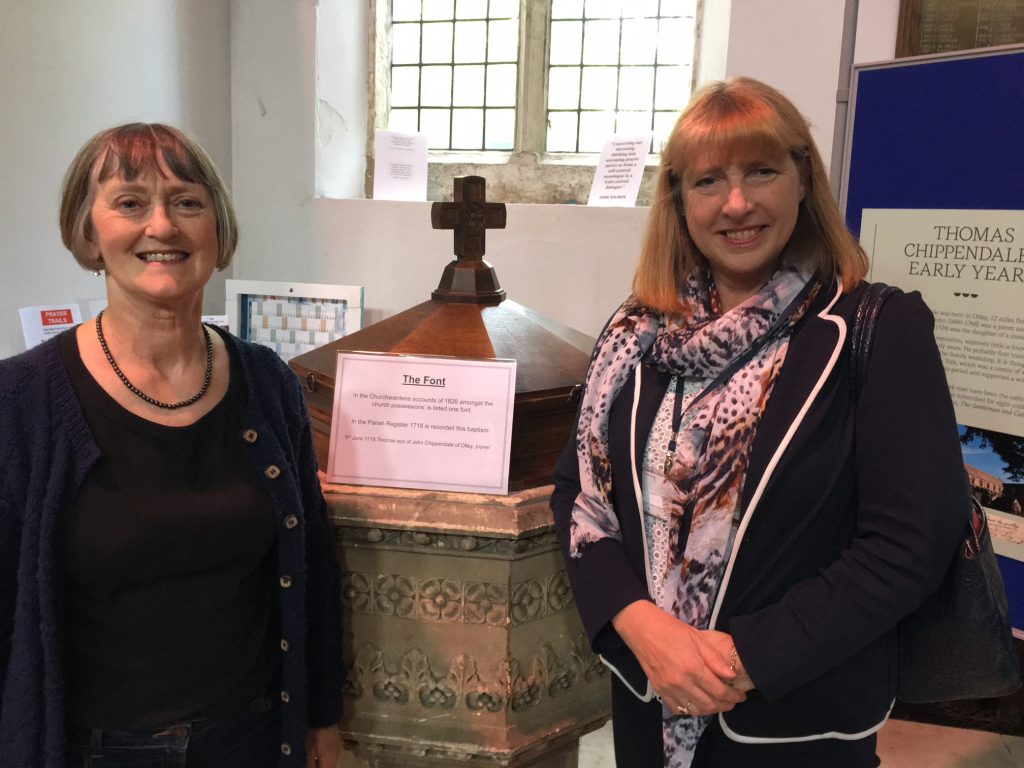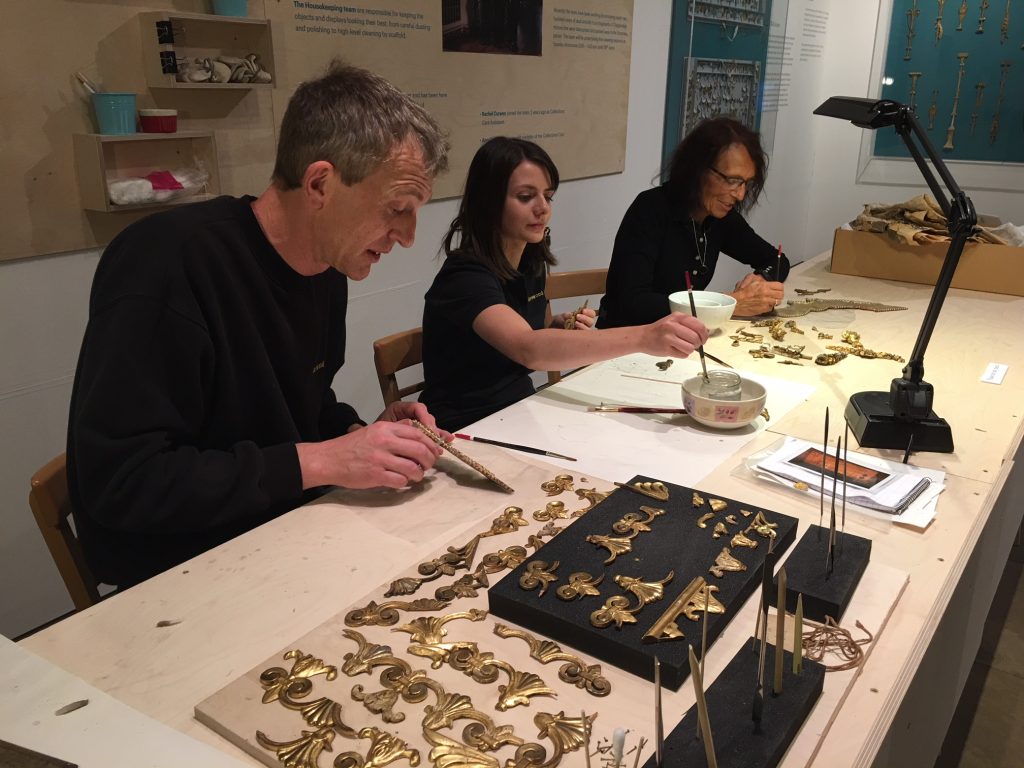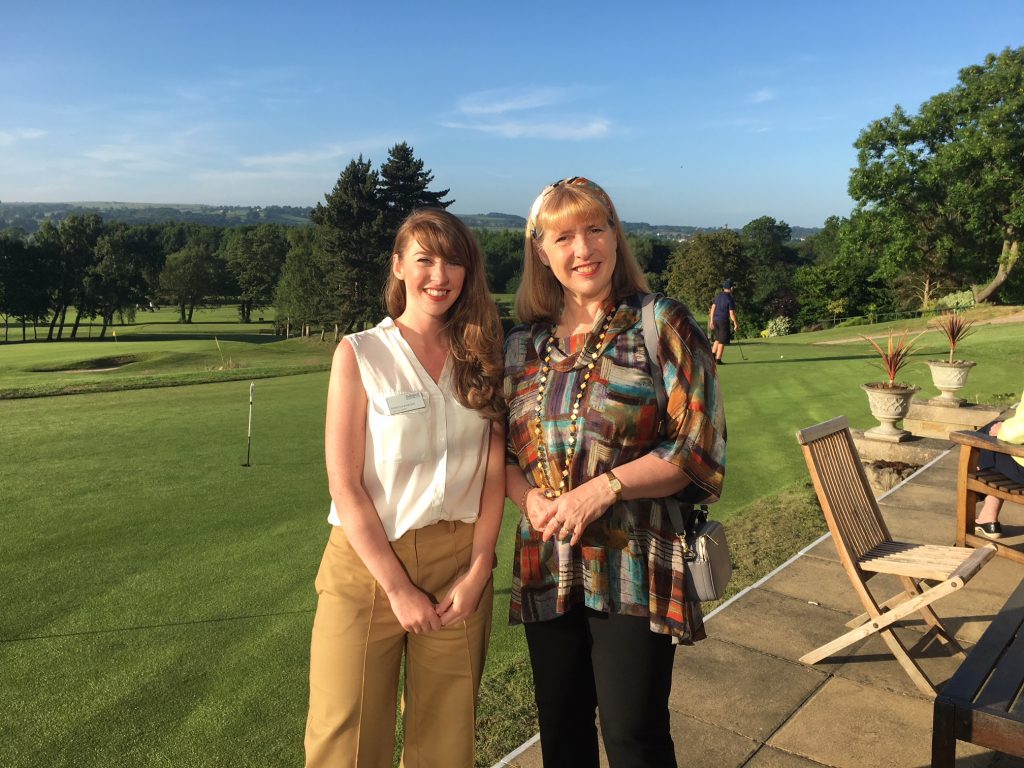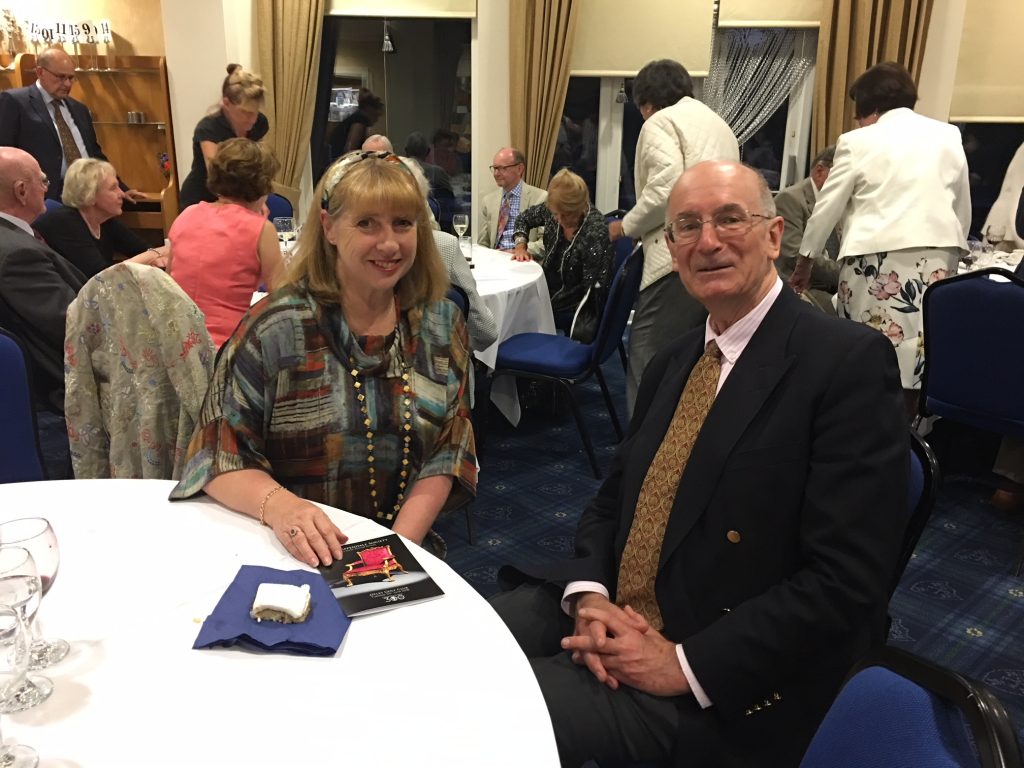 One of the most exciting aspects of the Chippendale exhibition this year was the contemporary response of the artist Geraldine Pilgrim who considered the relationship between a finished piece of Chippendale furniture and the original material from which is was constructed, wood and the trees from which this wood came.
One of the most exciting aspects of the Chippendale exhibition this year was the contemporary response of the artist Geraldine Pilgrim who considered the relationship between a finished piece of Chippendale furniture and the original material from which is was constructed, wood and the trees from which this wood came.
She used the phrase ‘Their Most Obedient Servant’ from Chippendale’s Director, as an over-arching title for her exhibition. Her two intriguing and thought-provoking pieces Root and Branch on display in the Terrace Gallery and Family Tree in the Stables Courtyard, fascinated visitors over the summer months. I caught up with Geraldine Pilgrim recently and asked her about her experience working at Harewood:
Ann: How did you came to initially be inspired by Thomas Chippendale?
Geraldine: I was inspired – when I first heard the Harewood theme to be used for the Chippendale celebration “From a Tree to a Table …”- to create imagery that linked a tree with wood, and the intricate carving and gilding of Chippendale’s craftsmanship. I’ve always believed that it’s often the case when visiting stately homes and seeing beautiful ornate and decorative furniture by Master Craftsmen that the materials from which they are made can be forgotten or not realised what the source of these masterpieces actually is – very simply a tree. I fell in love with Thomas Chippendale – my research led me to perceive him as a man of great warmth, integrity, energy and generosity.
What do you most admire about his craftsmanship?
Geraldine: Chippendale was a Master Craftsman who genuinely loved what he did. He had an understanding of wood with a unique ability to realise the potential of this natural material. I think of him as a site – specific artist because he didn’t just design and make furniture, his designs responded to the rooms where his furniture would be placed, in the buildings where he was commissioned and – through his close collaboration with Robert Adam- the wallpaper, furnishings, carpets as well as the furniture, created total environments. His ideas although intricate and highly detailed were not just for decoration but were made to be practical. As the 7th Earl of Harewood said in 2000, ‘The great Diana and Minerva commode stood in my mother’s sitting room and I remember almost as soon as we came to live here, when I was only seven, watching my mother delve into it extracting writing paper and things of that sort. It was not opened daily and she handled it with great care but it was very much in use during the War when she stored wrapping paper and reconstituted envelopes in it’
Your piece Root and Branch seemed such a dramatic response and I know theatre has played a key role in the development of your practice. How did you approach this commission and the display?
Geraldine: As a site- specific artist I always respond in the first instance to the site itself using its history, atmosphere and memories that I feel are embedded in the walls of a building as initial inspiration. Root and Branch was a development in my work as it was very much a gallery piece- albeit a beautiful architectural gallery space- as I realised that I wanted to create a sculpture which would stand in its own right as a piece of work and could be placed anywhere. I loved the theatricality of a tree growing a piece of furniture and that a branch could appear to be almost giving birth to a Chippendale chair. Trees are a constant influence in my work – when appropriate – and the skeletal outlines of the structure of branches has always inspired me. I knew that the Gallery required a distinctive sculpture that could be placed within the four columns and wanted the simplicity of a mahogany box, Chippendale chair, a distinctive branch and a tree root would provide an artistic response as to where Chippendale’s furniture initially came from. An original Chippendale Chair was placed in the gallery, so the carved and gilded original chair could be seen through the branches central curve in Root and Branch.
The intriguing Family Tree was admired by visitors over the summer and as I gave lectures locally I met descendants of the Chippendale family. What inspired you to respond in this way to Chippendale’s story?
Geraldine: It was important to link the imagery within the Gardens to the House so that visitors to the Courtyard Café would be encouraged to enter Harewood House itself as well as visiting the Gardens. With Family Tree I wanted to create an outdoor installation that would not only be visually powerful enough to be noticeable within the stunning Stables Courtyard but would also inspire people to know more about the man himself. This commission gave me an opportunity to connect with Chippendale, his family and his craft by imagining Thomas Chippendale, inspired by his love of wood, dreaming of his own family tree.
Siting Family Tree in the centre of the Courtyard was a perfect setting as it meant that visitors would not only be able to view it by walking around the Installation but also sit with the bed/tree in their midst whilst drinking their teas and coffees enabling it to became a natural and accepted part of their environment. The tree -constructed from individual pieces of oak to my design- burst through the wire mattress base of the bespoke 4 poster bed and embedded in the tree trunk, branches and within the mattress wire base were small engraved brass plaques with all the names of his known family therefore creating a 3 dimensional Chippendale family tree. It was fascinating in my research to discover that he not only had two wives and so many children but that by looking at the names and dates on the plaques, a picture of a real man not just a fabled Master Craftsman began to emerge, with the losses, heartbreaks and history that every family has contained within the engravings.
What for you was the highlight of your work at Harewood?
Geraldine: The moment when I walked alone to view both installations when they were finally in place and those initial ideas and scribbles from months before became a reality. Root and Branch in particular was challenging to install. My team carefully manoeuvred the sculpture through the doorways of the House, for as the chair was already positioned in the branch, it could not be separated and its angle meant the width of the sculpture caused major difficulties but my team were so skilful it all went seamlessly.
Watching the tree of Family Tree being hoisted by crane up and over the beautifully constructed bed so it would be placed accurately onto the waiting plate that would hold it safely in position; was an amazing sight and always in this type of work, the skills and patience of my creative team are always a highlight as I could never achieve my ideas without them.
The commissioning process is always fascinating. Can you tell us something about how you worked with the team at Harewood?
Geraldine: The support from the team at Harewood was amazing. It felt like a true collaboration as they always made sure that I felt that the commission was very much part of the fabric of the House and Gardens and that it was an integral part of the Chippendale celebrations. It was obvious to me at the outset that the team at Harewood had such respect for Chippendale and I valued so much all the assistance in making sure I had enough support and information from Harewood for my research.
You can read more on the Chippendale 300 blog.
With special thanks to Christie’s for their sponsorship of the Chippendale 300 blog series.
![]()
